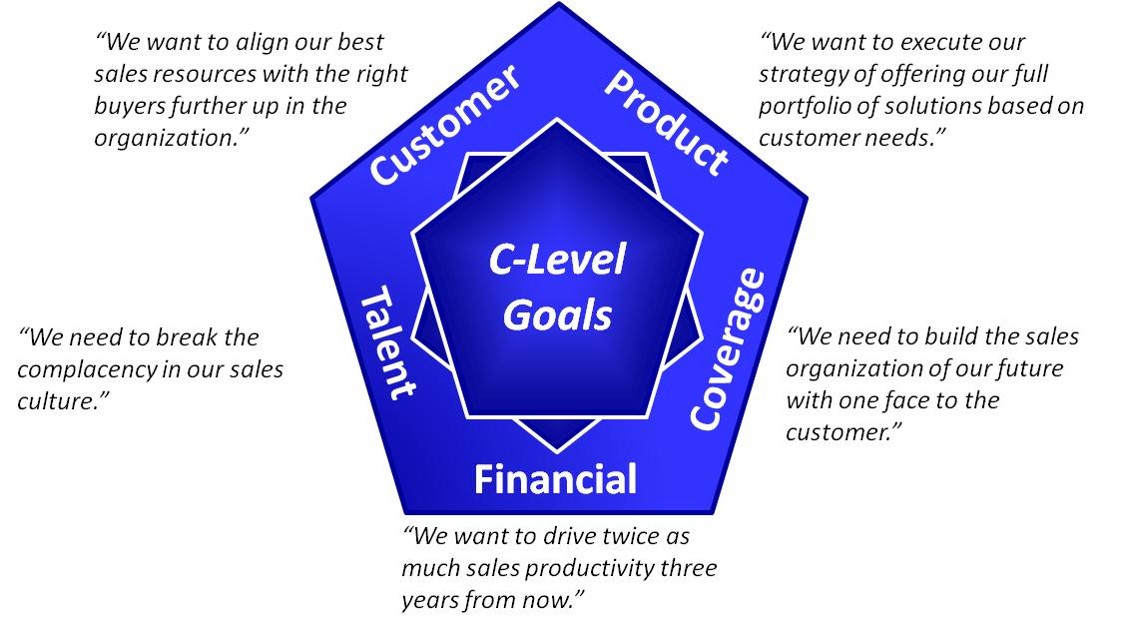Setting Your C-Level Goals℠ For Sales Compensation

As sales executives determine priorities for their business related to sales compensation, they need to set their C-Level Goals. These will define the major priorities for the organization that will be converted to the sales compensation plan. Those priorities provide clarity for how they will design the plan and the behaviors the plan’s going to drive in the organization. Once set, the C-Level Goals will force answers to the key questions that will lead to the program’s success. They will also help overcome resistance as sales leaders become deeply involved in the design of the compensation plan.
While the Revenue Roadmap defines all our possible destinations, the following dimensions, the five C-Level Goals, help us to make the right strategic alignments and stay on track.
There are five C-Level Goal areas that can describe our strategy. Articulating these from the C-level to the organization helps to simplify the critical few from the trivial many that can emerge from an overall examination of the 16 disciplines of The Revenue Roadmap.
Most organizations can concentrate on building programs that support these five major areas.
- Customer. The Customer dimension describes priorities in terms of buyer types and segments. Who are the right types of companies and buyers for our business?
- Product. The Product dimension identifies which offers will get the most focus. What products and services should be emphasized? Which are strategic and which are critical for cash flow? What are the priorities for cross selling?
- Coverage. The Coverage dimension articulates the major methods of matching sales resources to each customer segment. What are the routes to market? What is the role of third-party channels? What will the sales organization look like?
- Financial. The Financial dimension specifies monetary goals. What growth results are necessary for revenue, profit, and market share? How is the return on investment measured, with improvements in the organization and sales programs?
- Talent. The Talent dimension defines who the sales organization needs in its coverage roles to reach its goals. What types of skills will execute the strategy? What’s the talent inventory? Where does the organization need to build strength? Where do we need to source new talent?
Looking at the complexities of the growth plan, setting the priorities around the Customer, Product, Coverage, Financial, and Talent goals can provide clear direction for a range of sales effectiveness programs, including sales compensation.
Bob Brennan, former CEO of Iron Mountain, a Fortune 1000 information management services company, has been through similar challenges with his sales organization: “How do you want to incent the right behavior? I think about sales compensation from a perspective of what’s strategically important to the business, and how we can motivate people to that end.”
Brennan asks the same three fundamental questions at each of his touch points in the compensation design process:
- How does what we’re trying to sell strategically fit?
- Do we have the ability to execute?
- How can we drive strong returns on the presumption that it fits strategically and can be executed?
How do you connect your sales compensation plan to the strategy of the organization?

We Rethink Sales…
SalesGlobe is a data-driven, creative problem-solving firm for sales that solves the most challenging problems.



